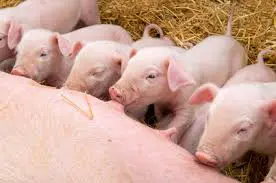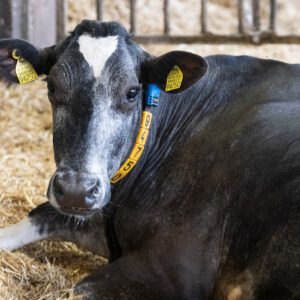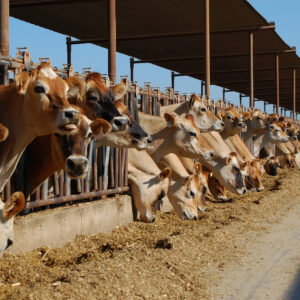A practical checklist for the successful management of diarrhea in nursing piglets.
Preweaning mortality represents a cost to the swine producer; it is a lost financial opportunity and is considered a welfare concern in commercial pig production. preweaning mortality ranges between 10% and 20% in pig-producing countries, with diarrhea being one of the leading causes (Muns et al., 2016).

Diarrhea: what makes it so problematic?
Neonatal diarrhea increases morbidity and mortality, decreases growth rates, and causes a more significant variation in piglet weights at weaning. Several factors influence the occurrence of diarrhea, such as infectious agents, host immunity, and poor management practices (Wittum et al., 1995). When there is a high sticking density, an environment that is not regularly cleaned or maintained, or when the immune activity of the suckling piglet is impaired, the risk of an infectious outbreak is considerably increased (Cho & Kim, 2011).
Managing diarrhea in nursing piglets
There are many techniques available to producers to help reduce the occurrence of diarrhea in farrowing units. Most of these strategies are regularly implemented and widely known to pig farm managers. However, to identify potential opportunities, for improvement, it’s always critical to review standard practices performed on the farm.
A practical checklist for the successful management of diarrhea in nursing piglets is listed below:
Pre-farrow (before sows enter the room)
- Sows selected for breeding should have a minimum of 14 functional teats.
- Vaccinate sows before farrowing, specifically with vaccines that protect the litter against microorganisms that may cause diarrhea, such as Escherichia coli, Rotavirus, and Clostridium sp.
- The farrowing room should be power washed an disinfected before sows enter (Dvorak, 2008; Taylor & Roese, 2006).
Pre-farrow (before sows enter the room)
- Provide a supplemental heat source for piglets (heat lamp, creep area, heated floor). The temperature for a newborn piglet should be approximately 90°F (32.2°C).
- Ensure the piglet and sow waterers are working correctly.
- Check for high airflow areas in the farrowing room (Dawson, 2021; Towers, 2012).
Post-farrow (up until 24 hours after farrowing)
- Dry piglets right after farrowing using a high-quality drying agent.
- Assist piglets with colostrum intake (min. 220g per piglet).
- Piglets should ingest colostrum only from their mother, not from another sow.
- Split suckle large litters; this involves dividing the litter into two groups and letting the small piglets ingest colostrum for 30 to 60 minutes.
- Utilize cross-fostering following a strict protocol.
- All piglets should suckle on the sow until weaning (This may require nurse sows).
- The number of piglets per sow should not be greater than the number of functional teats. If this is not the case, consider cross-fostering.
- Clean the pen right after farrowing (remove the placenta, fetal remains, blood, and feces from the pen) (Rea, 2018; Vansickle, 2013).
Lactation (from 24 hours after farrowing to weaning)
- Clean pen frequently (do not share cleaning objects between litters with and without diarrhea).
- Perform the daily care of non-infected litters before attending to the infected litters.
- Adjust the heat source daily by watching how the piglets lay; increase the temperature if piglets are piled up. Under ideal conditions, piglets should be lying on their side with their legs extended.
- Use a high-quality dry disinfectant safe for piglets’ skin and mucosa (Stalosan Ⓡ F) at least once a week in a pen or in the entire farrowing house to reduce moisture, improve animal welfare, and eliminate many pathogens.
The effect of Stalosan F application on mortality and scour treatments 15 days after farrowing (Vilofoss, 1994)

- Require barn staff to dip their boots in a disinfecting solution before entering the farrowing rooms.
- Disinfect boots between pens and rooms by spreading Stalosan Ⓡ F on the aisles and between pens.
- Limit stepping into farrowing crates. If someone needs to step into a pen, make sure they disinfect their boots in a disinfection/germicide powder in the aisle before entering a crate.
- Use a positive pressure filtration system to prevent airborne pathogens from entering the barn (Rea, 2018. Reese et al., 2019).
Environmental sanitation and hygiene are essential
Any discussion on farrowing room management begins with excellent sanitation and hygiene of the environment, as most of the infectious agents that cause diarrhea can arise from environmental contamination. In this context, StalosanⓇ F can play a vital role in a farm’s sanitation program. Before sow entry into the farrowing house and during the lactation period, StalosanⓇ F can be used to prevent bacterial growth and minimize disease challenges. When applied once a week, StalosanⓇ F helps to create a dry environment, which:
- Reduces diarrhea and pneumonia cases by more than 50% in swine operations, which leads to fewer antibiotic treatments (Morrison, 2007; Goyal, 2015).
- Reduces mortality rates in farrowing barns (Morrison, 2007; Goyal, 2015)
- Helps prevent scours in farrowing houses and service areas (Skodborg, 2004; Wattanaphansak et al. 2009).
StalosanⓇ F provides quick and effective drying when used directly on newborn piglets. In addition, it aids in protecting them from excessive heat loss that may lead to diarrhea or even death. Furthermore, StalosanⓇ F is the only EPA-registered dry disinfectant that is safe to use in the presence of animals and humans. With a pH of 3.5, StalosanⓇ F will not harm the eyes, lungs, or skin. In addition, its’ high concentration of antimicrobial mineral acids helps to:
- Significantly decrease moisture in the animal laying area and of the air to prevent bacterial growth.
- Lowers pH to help prevent infection.
- Kill bacteria, pathogens, fungi, viruses, parasites, and fly larvae to prevent infection.
Final thoughts
It is well known that piglet diarrhea and mortality demand effective strategies to mitigate their effects in commercial facilities. However, those strategies involve a multifaceted approach and must be well-executed, considering each farm’s particular circumstances. StalosanⓇ F is one strategy available to help maintain a higher standard of environmental sanitation and proper early piglet care in farrowing rooms.
References
.1691 Dawson, S. (2021). Water: The forgotten nutrient for pigs. Department of Primary Industries and Regional Development. https://www.agric.wa.gov.au
/water/water-forgotten-nutrient-pigs. Dvorak, G. (2008). Disinfection 101, https://www.coursehero.com
/file/10125880/Disinfection101/ Goyal, S. (2015). Virucidal efficacy of powder Stalosan F against PEDV. University of Minnesota. Koketsu, Y., Takenobu, S., Nakamura, R. (2006). Preweaning mortality risks and recorded causes of death associated with production factors in swine breeding in Japan. Journal of Veterinary Medicine Science, v. 68, p. 821-826. https://doi.org/10.1292/jvms
.68.821 Morrison, R. (2007). QAF Meat Industries Pty Ltd. The evaluation of Stalosan F in farrowing accommodations. Australia. Muns, R., Nuntapaitoon, M., Tummaruk, P. (2016). Non-infectious causes of pre-weaning mortality in piglets. Livestock Science, v. 184, p. 46-57. https://doi.org/10.1016/-j.livesci.2015.11.025 National Hog Farmer. (2017). Positive pressure filtration promises better pig health. https://www.nationalhogfarmer
.com/animal-health/positive-pressure-filtration-promises-better-pig-health Rea, J.C. (2018). Care of Pigs From Farrowing to Weaning. https://extension.missouri.edu
/publications/g2500 Reese, D.E., Hartsock, T.G., Morrow, M. (2019). Baby pig Management – Birth to Weaning. https://swine.extension.org
/baby-pig-managmement-birth-to-weaning/ Skodborg, J. (2004). Salmonella Farm Trial. Vilofoss, Denmark. unpublished internal company document. Taylor, G., & Roese, G. (2006). Basic Pig Husbandry – Gilts and Sows. The Pig Site. https://www.thepigsite.com
/articles/basic-pig-husbandry-gilts-sows. Towers, L. (2012). The Importance of Proper Heat Placement in Farrowing. The Pig Site. https://www.thepigsite.com
/news/2012/12/the-importance-of-proper-heat-placement-in-farrowing-1. Vansickle, J. (2013). National Hog Farmer. Day One Pig Care. https://www.nationalhog
farmer.com/day-one-pig-care Wattanaphansak, S., Singer, R.S., Isaccson, R.E., Deen, J., Gramm, B.R., Gebhart, C.J. (2009). In vitro assessment of the effectiveness of powder disinfectant (Stalosan F) against Lawsonia intracellularis during two different assays. Veterinary Microbiology, 136, 403-407. https://doi.org/10.1016
/j.vetmic.2018.12.002 Wittum, T.E., Dewey, C.E., Hurd, H.S., Dargatz, D.A., Hill. G.W. (1995). Herd and litter-level factors associated with the incidence morbidity and mortality in piglets 1-3 day so age. Journal of Swine Health and Production, v. 3, p. 99-104. https://www.aasv.org/shap
/issues/v3n3/v3n3p105.pdf Vilofoss, Denmark. (1994). Pig Breeders/Rearer Stalosan Trial, Lincolnshire – U.K. Unpublished internal company document.



